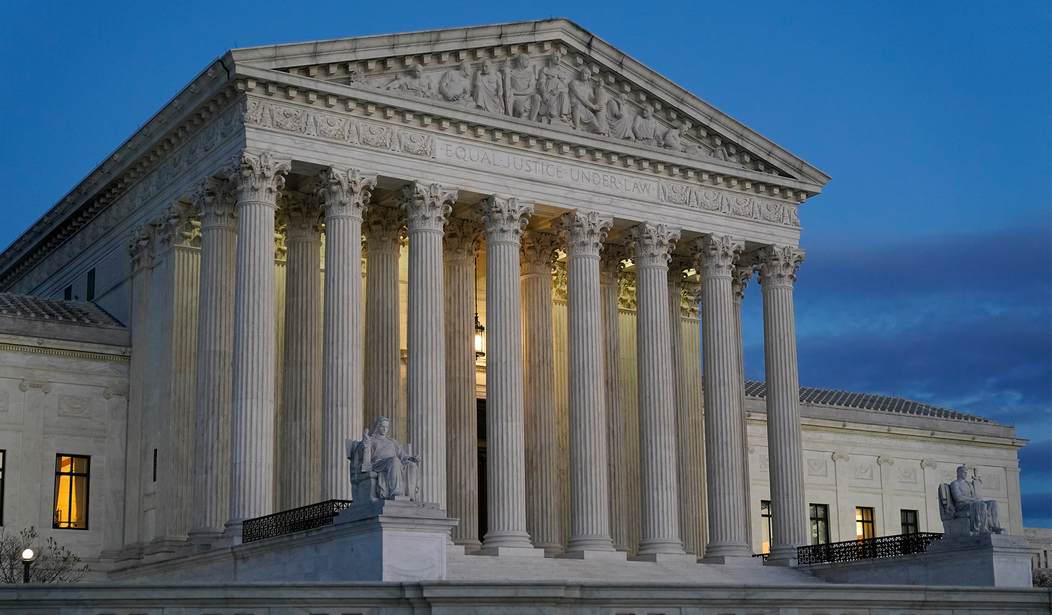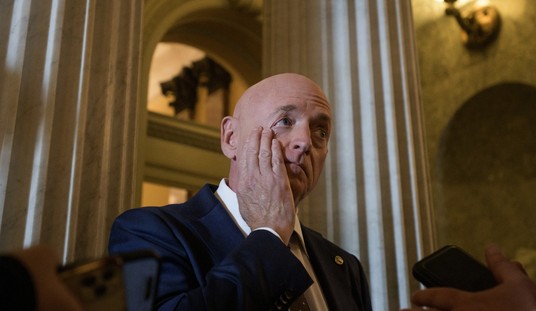Next month the Supreme Court is set to hear oral arguments in U.S. v. Rahimi, addressing the scope of the Second Amendment for the first time since it issued the Bruen decision last summer. While this isn’t the case that most Second Amendment advocates would have chosen to be the next 2A question decided by the Court, an amicus brief filed by the National Association of Federal Defenders does a pretty good job of separating the defendant and his questionable legal history from the underlying issue at the heart of the case: namely, who exactly comprises “the people” whose right to keep and bear arms shall not be infringed.
Zachey Rahimi is accused of possessing a gun while he was the subject of a civil domestic violence restraining order. Additionally, he’s been accused of a number of shootings in the Dallas/Fort Worth area, though those accusations aren’t a part of the case before the Court. Instead, the question is whether someone who’s been accused of a crime can be stripped of their Second Amendment rights without a finding of guilt or even criminal charges being laid against them. According to the federal public defenders, the answer is “no”. But the public defenders go even further, arguing that “law-abiding citizens” aren’t the only people who possess the right to keep and bear arms.
“A well regulated Militia, being necessary to the security of a free State, the right of the people to keep and bear Arms, shall not be infringed.” U.S. Const. amend. II. Like the First and Fourth Amendments, the Second Amendment does not circumscribe “the people” whose rights it presumptively guarantees, and which the Court described as encompassing all members of our “national community,” and “not an unspecified subset.”
To circumvent this basic premise, Petitioner argues that there is a historical tradition of legislatures disarming those they deem “not law-abiding, responsible citizens, regardless of whether they are among ‘the people.’” . This purported historical tradition, it claims, “exclude[s] only criminals and individuals whose possession of firearms would endanger themselves or others[.]”
To the extent Petitioner is arguing that citizens who are not law-abiding and responsible are not among “the people” afforded Second Amendment rights, that position contravenes the constitutional mandate and this Court’s jurisprudence, namely Heller and Bruen. It “devolves authority to legislatures to decide whom to exclude from ‘the people,’” and relieves the government of its burden to demonstrate that a law regulating presumptively protected conduct is consistent with this Nation’s historical tradition of firearm regulation The Court should reaffirm what it knew to be true in Heller, that “the people” in the Second Amendment, as in the First and Fourth Amendments, includes all members of the national community.
The public defenders acknowledge that both the Heller and Bruen decisions reference the right of “law-abiding, responsible citizens”, but argue that the Supreme Court wasn’t saying anything about the scope of the right by including those adjectives. Instead, the Court was merely recognizing the status of the plaintiffs in those cases, who weren’t precluded by existing state or federal law from owning or possessing a firearm.
Bruen confirms the narrow import of Heller’s “lawabiding” references. Otherwise, Heller’s affirmance of “the right of law-abiding, responsible citizens to use arms in defense of hearth and home,” would impliedly render the right inoperative outside of the home. Bruen, of course, held the opposite, reasoning that “[n]othing in the Second Amendment’s text draws a home/public distinction with respect to the right to keep and bear arms.” Critically, Bruen explained that Heller had not passed on the issue, and that its “remark[s]” about the preeminence of the need for self-defense in the home “did not suggest that the need was insignificant elsewhere.’”
That Heller and Bruen did not specifically define “law-abiding,” let alone provide any textual or historical justification for the purported narrowing of “the people” the Petitioner suggests, confirms that the Court’s references to “law-abiding” people were not meant to narrow the scope of the Second Amendment. It is inconceivable that the Court would exclude, in such summary fashion, an entire, yet undefined, class of people from the purview of a long-neglected fundamental constitutional guarantee that it insisted not be treated “as a second-class right, subject to an entirely different body of rules than the other Bill of Rights guarantees.” Yet that is precisely the result that would follow under a truncated view of “the people.”
If, as the public defenders suggest, the rights of non-law-abiding citizens to keep and bear arms is presumptively protected by the language of the Second Amendment, it falls to the federal government to show that there are longstanding laws and statutes adopted at the time of the ratification of the Second (and perhaps Fourteenth) Amendment that excluded that group from exercising that right. The public defenders argue that DOJ is misrepresenting that test and instead touting a “a purported tradition of disarming “persons who are not law-abiding, responsible citizens”—which, “[i]n this context,” includes supposedly “dangerous individuals” such as the subjects of domestic violence protection orders.”
This broad-brush effort to defend the statute is inconsistent with the methodology this Court articulated in Bruen for three distinct reasons. First, it ignores Bruen’s demand that statutes addressing longstanding problems be supported by “distinctly similar” historical regulations. Second, it relies on sources unconnected to “this Nation’s historical tradition of firearm regulation.” And third, it conducts its analysis at an impermissibly high level of generality, relying on vague, boundless descriptors like “law-abiding” and “responsible” that invite manipulation by legislatures and threaten to plunge courts back into the means-ends scrutiny Bruen rejected.
According to the public defenders, the Justice Department is making the same error that the state of New York engaged in when it tried to defend its “may issue” carry laws; tying together a disparate set of laws and regulations in an attempt to grant itself the sweeping power to deny the general public their right to carry… or in this case, to possess a firearm altogether.
It aggregates discrete examples—laws disarming loyalists, minors, tramps, etc.—and derives the much broader principle that non-law-abiding, irresponsible, or dangerous groups, in general, do not enjoy the right to keep and bear arms, even if a particular group was never disarmed at the founding. This impressionistic interpretation of the historical record is not only wrong, but also dangerous, because it leaves unclear who and what might be swept under Petitioner’s standard.
The “phrase ‘law-abiding, responsible citizens’ is as expansive as it is vague.” “It cannot mean that every American who gets a traffic ticket loses her Second Amendment rights.” But if traffic tickets do not separate the lawabiding from the non-law-abiding, or the responsible from the irresponsible, what does? There is no principled way to decide.
The word “dangerous,” too, “ha[s] no true limiting principle.” That designation is “far too broad” to guide courts in comparing groups disarmed today to groups disarmed at the founding.
A vague, malleable standard like “law-abiding,” “responsible,” or “dangerous” suffers from two additional shortcomings. First, it delegates to legislatures the authority to decide who is sufficiently law-breaking, irresponsible, or dangerous to be stripped of their Second Amendment rights. The perils of that route are obvious. “Congress could claim that immigrants, the indigent, or the politically unpopular were presumptively ‘dangerous’ and eliminate their Second Amendment rights without judicial review,” thereby “render[ing] the Second Amendment a dead letter.” It was this danger that prompted the Court in Bruen to warn that “judicial deference” to legislatures is not “appropriate” in the Second Amendment context.
Second, it would require courts to scrutinize legislative classifications to determine whether they are reasonable, providing at least a limited constitutional backstop to protect against the worst abuses. Petitioner’s brief invites the Court to engage in exactly this kind of analysis. It cites numerous statistics and social-science studies meant to substantiate the congressional judgment that DVPO subjects are dangerous, and it repeatedly stresses that § 922(g)(8) is narrowly tailored to achieve Congress’ goal. But this is the precise “judge empowering interest-balancing inquiry” this Court repudiated in Bruen. Indeed, it mirrors the reasoning lower courts used to uphold § 922(g)(8) under pre-Bruen means-ends balancing.
Petitioner’s proposed “limitation” on the Second Amendment—“law-abiding, responsible citizens”— is therefore indeterminate, unworkable, and, at bottom, no limitation at all. Accepting it will inevitably devolve into means-ends scrutiny all over again.
The public defenders suggest that a less-than-total ban on the possession of firearms might have legitimate historical analogues, pointing to laws and statutes that precluded public carrying of firearms for enslaved individuals without barring them from keeping a gun at home, or laws that disarmed “disloyal” Americans, but restored their rights once they swore an oath of fealty to the United States. The law that Rahimi is charged with violating doesn’t allow for any possession of a gun, even incidentally. The prospect of fifteen years in federal prison and a permanent loss of Second Amendment rights is also far more severe than those found in the paltry number of supposed historic analogues cited by the DOJ, which typically resulted in a fine or a temporary ban on gun possession. As the public defenders note, participants in Shay’s Rebellion were stripped of their ability to keep and bear arms, but only for a period of three years. That’s a far cry from the lifetime deprivation of rights for those convicted of a non-violent felony imposed by § 922(g)(8).
The public defenders in question obviously have a vested interest in seeing this statute declared unconstitutional, if for no other reason than it would benefit an untold number of their clients. But the arguments they raise make a great deal of sense, and since they largely rely on the Supreme Court’s own decisions in Heller and Bruen, it could prove to be persuasive. Justice Amy Coney Barrett has already signaled during her time on the appellate bench that she believes a “dangerousness” standard would be more appropriate than a blanket prohibition for all felons or those convicted of crimes punishable by more than a year behind bars, and while the public defenders argue that even that standard may be too vague to satisfy the Bruen test, it would be a heck of a lot closer to what the Founders intended than the DOJ’s assertion that any “lawless” act by an individual can render their right to keep and bear arms null and void.









